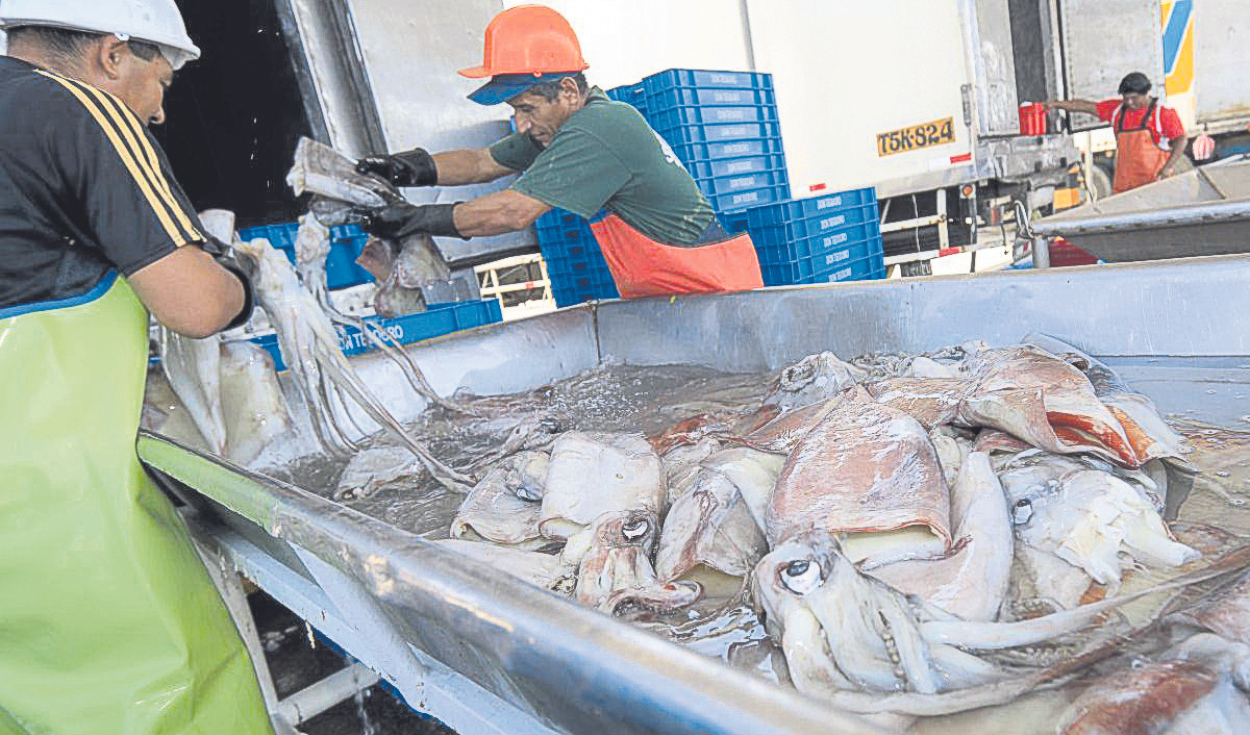
More than 90% of the squid caught in Peruvian waters is destined for export, an activity that has been on the rise since the late 1990s and in which more than 4,000 vessels participate today. Its international price per metric ton (MT) exceeds US$2,000, according to the Ministry of Foreign Trade and Tourism (Mincetur).
It is a resource categorized as “fully exploited” by Imarpe and this means that if the fleet that extracts it increases, the availability of the resource in the future may be put at risk, which is why maximum capture quotas are established each year.
However, Congressman Bernardo Pazo Nunura of We are Peru has been promoting bill 5496, which “strengthens the formalization process of artisanal fishing vessels”, to add 2,012 vessels to the extraction of the resource also called “giant squid”, through the Artisanal Fishing Formalization System (Siforpa II ).
For its part, the Ministry of Production (Produce) has already made known its technical opinion. It states that although Siforpa II has already ended, some 1,027 applications could be part of this process. So contradictory.
According to the National Artisanal Fishing Society (Sonapescal), if this rule is approved, Fishermen’s income would drop by 50%because although from January to June a record in landing of squid was recorded – 150% more than the previous year –, the subsequent months have not been as fruitful, so fishermen must spend more hours at sea and travel longer distances to find the coveted invertebrate.
To this it must be added that the squid production chain involves shipowners, processing workers, stevedores and others, among other actors.
“We now need to have equipment, better technology to find the resource because the fisherman It is guided by the currents, the winds, the moon. If a colleague found squid at one point, he spreads the word to a friend and everyone runs to that place, then they are adrift like that,” explains Elsa Vega, president of Sonapescal, to La República.
International opposition
More than 60 Peruvian organizations such as the National Society of Industries (SNI), the National Fisheries Society (SNP) or the Peruvian Chamber of Giant Squid (Capecal) have rejected initiative 5496, pointing out that “the only thing that would be achieved is allow vessels that were built illegally to enter since 2018.”
They were joined by 20 international companies – American and European – through a letter sent to Congress, where they indicated that they are concerned that the reputation and credibility achieved by Peru in the markets” where they currently operate are being “harmed.”
China, main destination for Peruvian squid
The export of fishing for Direct Human Consumption (CHD) between January and August 2023 totaled US$1,323 million 422,000, 21.8% more than the same period of the previous year, reported the Association of Exporters (ADEX).
The growth is partly explained by greater demand for squid (US$717 million 888,000), 104.4% more than in 2022 (US$351 million 180,000).
The squid was marketed in various presentations: frozen, residual meal, canned and fresh.
Its main destinations were ChinaSouth Korea and Spain.
The word
Elsa Vega Pardo, president of Sonapescal
“We are going to be filled with boats of wood and the sea is going to become a cemetery for boats in about 5 years, and what are we going to have for the future?; “What are the fishermen going to live on?”
Source: Larepublica
Alia is a professional author and journalist, working at 247 news agency. She writes on various topics from economy news to general interest pieces, providing readers with relevant and informative content. With years of experience, she brings a unique perspective and in-depth analysis to her work.











